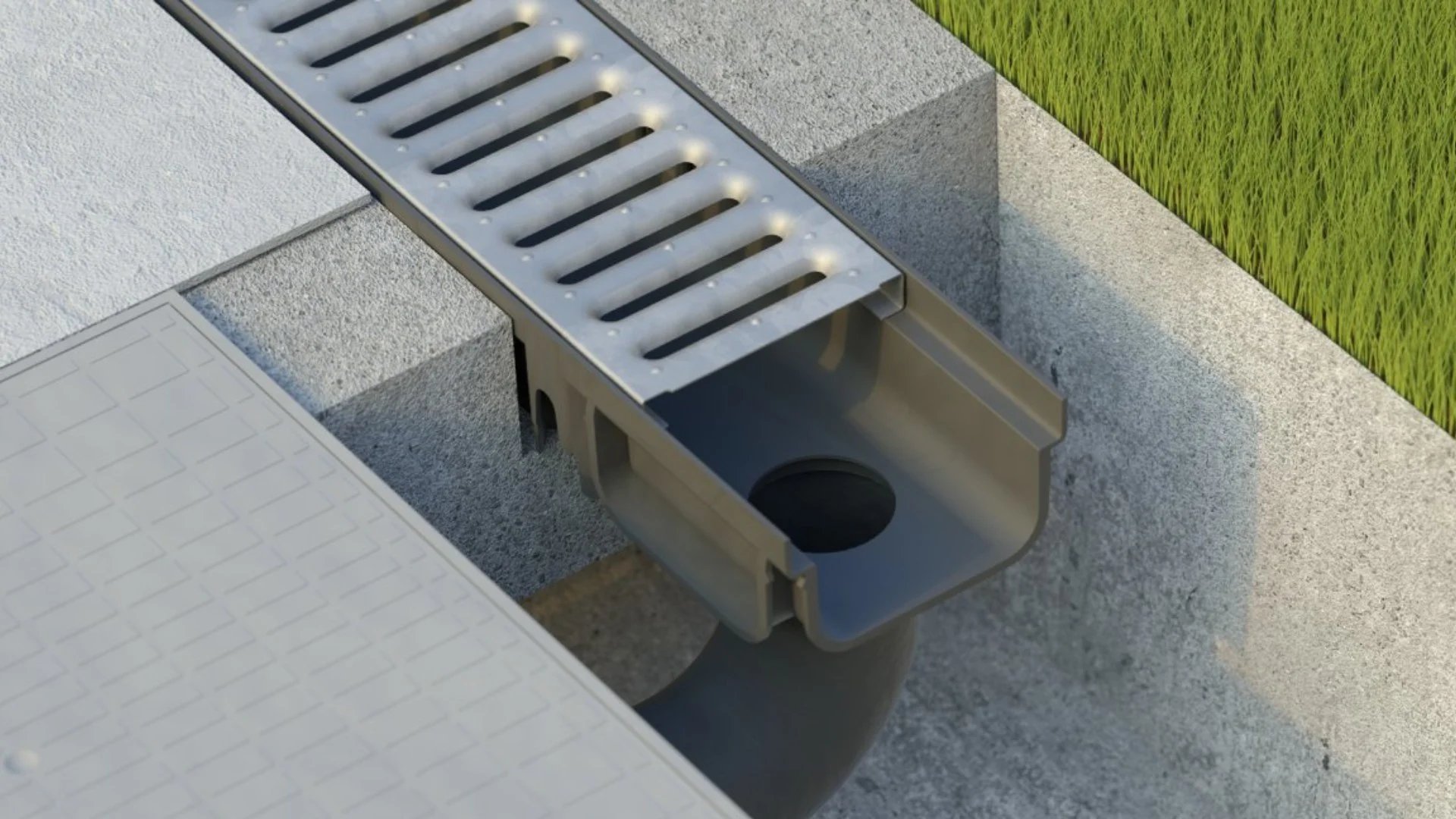Filter by Catalogue:
Products Found:
LOOKING FOR SOMETHING?
Rainwater management is crucial for preventing water accumulation and potential damage to properties. Without a proper rainwater drainage system, water that drains from roofs, paved areas, and other surfaces can create pooling, leading to the formation of stagnant water and increasing the risk of structural issues and water infiltration.
An adequate surface water drainage system is an important factor for both the livability and the safety of a building. This is especially true as global weather conditions become increasingly extreme.
The prevalence of torrential rains combined with strong winds in some geographical areas highlights the need for potent rainwater drainage systems and components. Additionally, efficiently designed and installed systems will perform better for longer periods of time, even under stress from weather conditions.
The Hydraulic Invariance principle
The hydraulic or hydrological invariance principle highlights the importance of maintaining water flow rate in a specific area before and after any transformation or development intervention.
It states that if a particular area produces a certain amount of water during specific weather conditions (precipitations) before any changes are made to the area, then it should still maintain the same quantity of water during similar conditions after the transformation.
The principle’s application is not limited to large-scale areas but is equally relevant for managing water in smaller contexts, including residential environments. It encourages sustainable practices that respect the natural water cycle and the hydrological balance of the region, ensuring that rainwater drainage systems manage excess water appropriately.
The rainwater drainage system along with the public sewer is therefore responsible for the outflow of excess rainwater but also for the overall care of the surrounding area.
Implementing sunken areas or designated drainage points strategically placed across the property allows water to be collected and drained away efficiently. It is essential to ensure that these drainage points are properly connected to the sewage system or public sewer, adhering to local authority regulations and guidelines.
This means that all water drained from your property from the roof towards rainwater downpipes, other sorts of drainage pipes, and surface water drains at the ground level need to be optimized for hydraulic invariance.
Stormwater management and its benefits for the environment
When stormwater is absorbed into the soil, it undergoes filtration and eventually replenishes aquifers or flows into streams and rivers. However, during heavy rain, water-saturated ground creates excess moisture that flows over surfaces and into storm sewers.
In urban areas, water rushes rapidly into storm drains, sewer systems, and drainage ditches, leading to potential issues like flooding, erosion, sewer system overflow, and infrastructure damage.
The main objective of stormwater management is to detain stormwater and eliminate pollutants. Different elements contribute to this process, such as pervious surfaces that allow rainfall and snowmelt to penetrate the soil, gutters, storm sewers, and conventional channel drainage.
Channel drain installation technical requirements and materials
The single most important component in rainwater drainage systems is arguably the channel drain, also known as drainage channel. It is a crucial component to assert control in the way both foul water and rainwater drains.
To sustainably develop urban spaces with positive hydrological effects on the environment, proper planning alongside high quality drainage components are required. This also benefits your public sewer system.
However, there is a wide array of drainage channels and drainage supplies to choose from. The European Parliament directive 2000/60 that establishes a framework for community action in the field of water policy, as well as material compliance requirements for drainage channels. More specifically, drainage channels must meet minimum technical requirements such as:
- Compressive, bending, and impact resistance.
- Resistance to chemical and atmospheric agents (including thermal shock).
There are another number of characteristics detailed by the directive. This includes guidelines on the lightness of materials which, in turn, have a significant impact on practicality, ease of installation, and transport.
Based on these characteristics, we can divide the channel drains into three types based on their production materials:
- Concrete drainage channels
- Polymer concrete channels
- Plastic drainage channels (in thermoplastic polymer)
These three different materials have different use cases based on the type of project and there are a number of benefits to plastic drainage channels.
Consult a skilled professional for a drain survey if in doubt. Find more information in our in-depth article on how to install drainage channels.
Dakota Group is a building materials supplier that offers a wide range of drainage supplies. We are a well-rounded supplier of building materials serving primarily the EMEA region and have established ourselves as a competent drainage supplier trusted by over four thousand customers.







